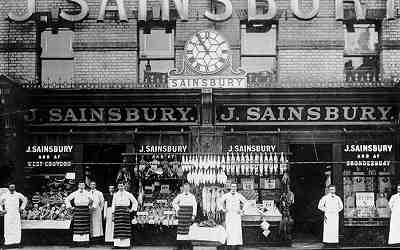|
Expansion |
||||||||||||||||||||||||||||||||||||||
|
Between 1890 and 1900 the number of shops trebled. By 1903 there were a hundred Sainsbury's branches. The main reason for this rapid expansion was the pressure of price competition. In order to sell at competitive prices John James needed to negotiate low prices with his suppliers. This was only possible when buying large quantities. Other retailers, for example Thomas Lipton or Home and Colonial, had far more shops than Sainsbury's and although they sold only a limited range of goods - Home and Colonial sold just five products - the scale of their businesses enabled them to do so very cheaply. It was essential for John James to match their prices and so he increased his chain of shops. This allowed him to buy goods in greater quantities and sell them more cheaply. The shops were all supplied from a new depot which John James established on the banks of the Thames at Blackfriars. It was more central than his original Kentish Town warehouse and was close to the wholesale markets at Smithfield, Leadenhall and Tooley Street, and to the London docks. |
||||||||||||||||||||||||||||||||||||||
For a list of Sainsbury's stores opened by 1900 go to the Reference Library |
||||||||||||||||||||||||||||||||||||||
|
||||||||||||||||||||||||||||||||||||||
